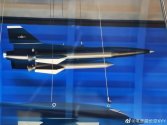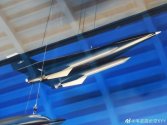D
Deleted member 24822
Guest
Tempest and F-X, the precursors to GCAP, were IIRC both envisaged as single seaters so there's at least one active program out there that thinks it's fine to just run things through a pilot. Aside from @Atomicfrog's points, I think it's also sensible from a technology maturity perspective not to bet the farm on the information fusion and ML algos yet with what is already a new concept. A drone officer gives you the room to experiment with and refine the more ambitious visions of loyal wingmen employment (i.e. beyond trucks) in terms of heterogeneity and numbers whilst hedging the decision making side of things for nowGot this question bugging me for quite a while: Is a twin-seater fighter (especially 5th-gen ones) really mandatory for flying and managing loyal wingman UCAVs?
I believe we all know that the appearance of the twin-seater variant of the J-20, i.e. J-20S since late 2021 has brought the discussion in the direction of J-20S' (expected) capability to control and manage loyal wingman UCAVs. That is, one pilot is responsible for flying the J-20S, another is responsible for flying those UCAVs. This point is often quoted in mass media and military circle discussions as well.
Although, a twin-seater fighter itself certainly isn't a new concept - the US has also planned twin-seater variants for their F-22 and F-35, but both plans were eventually scrapped. We might never see twin-seater variants for the F-22 and F-35 either, considering that LockMart and others are already working on 6th-gen fighters.
Despite this, do we - or shall I say, should we - seriously expect that LockMart would never find solutions/ways that would allow their F-35s to fly and control loyal wingman UCAVs even with just one pilot onboard?
If achievable, wouldn't advancement in AI, computer processing and automation onboard renders having one more pilot onboard just to fly those UCAVs redundant?
Besides, I think that having the ability to fly loyal wingman UCAVs with only one pilot per fighter can also reduce the need for building more twin-seater variants of said fighter just to cater for the need of having fighters that can fly and control loyal wingman UCAVs, while the rest of the single-seater fighters cannot do so.
This allows pretty much as many of said fighters of the same model across the entire fleet to be able to be attached with loyal wingman UCAVs, instead of just certain ones of twin-seater variant that can only be available in certain locations at any given time?
Moreover, this also allows the flying and control task of loyal wingman UCAVs to be easily swappable and transferable between vastly more fighters of the same model on the battlefield when the need arises (such as in case the original manned fighter flying those drones got shot down/forced to return to base prematurely, etc). Flexibility and logistics certainly can benefit a lot from this too.
I do wonder - Can China's single-seater J-20A/Bs (and J-35/31s in the future) be capable of flying and controlling loyal wingman UCAVs in the future? If possible, how long until this can become a reality? Or do we have to wait until 6th-gen fighters to be equipped of such capabilities?


